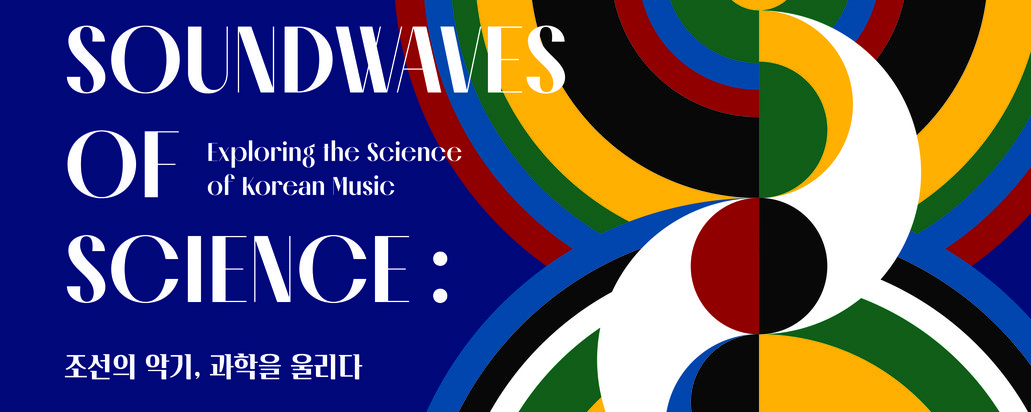Soundwaves of Science: Exploring the Science of Korean Music

The Korean Cultural Centre UK(KCCUK) is pleased to present Soundwaves of Science: Exploring the Science of Korean Music, from 3 April to 27 June 2025, in collaboration with the National Science Museum of Korea(NSM Korea). For the first time in the UK, a country renowned for its rich scientific heritage, traditional Korean music will be explored through the lens of science in this groundbreaking special exhibition. This unique event aims to foster a cultural and scientific knowledge exchange between the UK and Korea, offering audiences an innovative perspective on Korea’s musical heritage.
Marking the 80th anniversary of the National Science Museum of Korea, this exhibition makes its international debut at the Korean Cultural Centre UK. With the global rise of K-pop and an increasing interest in traditional Korean culture, Soundwaves of Science invites UK audiences to experience Korean music in an innovative way—through the science of sound.
Soundwaves of Science: Exploring the Science of Korean Music bridges history and innovation, revealing how music, physics, and technology come together to shape Korea’s unique sonic heritage. The exhibition begins with the sacred sounds of Jongmyo Jeryeak, the royal ancestral ritual music, where the instruments Chuk and Eo mark the ceremony’s opening and closing. These sounds are more than mere signals—they are ‘heaven-opening’ vibrations that connect the divine and human realms because in Korean tradition, music serves as a powerful force linking heaven, earth, and humanity.
In Part 1, exploring the scientific and mathematical foundations of instrument-making during the Joseon dynasty, this section delves into King Sejong’s standardisation of pitch through the Pitch pipes and the Pyeongyeong (stone chimes), the fundamental tone of Korean music. Visitors will discover how early scientific principles and technologies were applied to create an exact musical scale and its connection to the precise weights and measures.
A comparative analysis of Eastern and Western instruments follows, focusing on the unique acoustics of traditional Korean instruments. Through an exploration of materials, resonance, and frequency, Part 2 in the exhibition dissects the physics behind the sounds of the Taepyeongso, Daegeum, Gayageum, and Jing.
In Part 3, this section bridges the tradition and the future of Korean music. Visitors will explore the tradition through Jongmyo Jeryeak and Daechwita, ceremonial and military music played in the royal court. A highlight of this section is the two AI ensembles on the themes of Sujecheon and Mitdodri, through mathematical and AI reinterpretations of the ancient melodies.
Finally, passing through the 15th-century blueprints of musical instruments in Akhak Gwebeom (1493), visitors will meet a Gayageum and a Geomungo, specially made by the National Intangible Cultural Heritage of Making Musical Instruments (Akgijang) and here they will experience the transmission of traditional wisdom to the future.
Through this immersive and interactive experience, Soundwaves of Science offers a fresh perspective on Korea’s rich musical heritage while highlighting its scientific ingenuity.
Seunghye Sun, Director of KCCUK, stated, “We are honoured to present the essence of Korean aesthetics in the UK. Aesthetics is the exploration of beauty, and music and science serve as the starting points of this journey. Just as the Korean phrase giun saengdong (energy in motion) suggests, music and science are deeply interconnected through the physics of sound, brain activity, and creativity. By interpreting Korea’s traditional music through science and technology, we aim to contribute to the future of cultural heritage.”
Sukmin Kwon, Chairperson of NSM Korea, stated, “We are delighted to present the first overseas exhibition of National Science Museum within the UK, a country renowned for its contributions to both science and the arts. This exhibition, which reinterprets traditional Korean music through science and technology, has been a bold and innovative endeavour for the National Science Museum of Korea. We hope it provides UK audiences with a fresh perspective on traditional Korean music.”
For further press information and a selection of press images about the exhibition, please contact Jaemin Cha on jaemin.cha@kccuk.org.uk
